#Celts
Explore tagged Tumblr posts
Text

152 notes
·
View notes
Text



Iron Age Curvilinear Strap Mount, National Museums Scotland, Edinburgh
#iron age#prehistoric#prehistory#archaeology#metalworking#design#Celtic#celts#la tene#curvilinear#mount#fitting#designs#past#ancient cultures#ancient craft#craft
154 notes
·
View notes
Text

272 notes
·
View notes
Text

Jean Markale - Women Of The Celts - Gordon & Cremonesi - 1975
#witches#celts#occult#vintage#women of the celts#britannia#gallia#britons#guinevere#boudicca#enide#mabinogion#gordon & cremonesi#jean markale#druids#1975#women
57 notes
·
View notes
Text

An “extremely rare" sight from NASA, and a reminder of why it’s called the Emerald Isle:
Moist ocean air also contributes to abundant rainfall. Ireland receives between 29 and 78 inches of rain per year, with more rain falling in the west and in the mountains. Most of the rain falls in light showers. This moist climate means plenty of clouds and fog. According to the Irish Meteorological Service, the sky is entirely cloudy more than 50 percent of the time. There are more clouds during the day than at night, and fog is common.
+
“The Celt, and his cromlechs, and his pillar-stones, these will not change much – indeed, it is doubtful if anybody at all changes at any time. In spite of hosts of deniers, and asserters, and wise-men, and professors, the majority still are adverse to sitting down to dine thirteen at a table, or being helped to salt, or walking under a ladder, of seeing a single magpie flirting his chequered tale. There are, of course, children of light who have set their faces against all this, although even a newspaperman, if you entice him into a cemetery at midnight, will believe in phantoms, for everyone is a visionary, if you scratch him deep enough. But the Celt, unlike any other, is a visionary without scratching.” ― William Butler Yeats
+
“Mad Ireland hurt you into poetry.” ― W.H. Auden
#St. Patrick's Day#Ireland#from the air#Emerald Isle#ocean air#NASA#W.B.Yeats#W.H.Auden#poetry#Celts#visionary
83 notes
·
View notes
Text
"Women in Britain 2,000 years ago appear to have passed on land and wealth to daughters not sons as communities were built around women's blood lines, according to new research.
Skeletons unearthed in Dorset contained DNA evidence that Celtic men moved to live with their wives' families and communities.
Scientists found evidence of a whole community built around the female line of a family over generations, probably originating with one woman.
"This points to an Iron Age society in Britain where women wielded quite a lot of influence and could shape its trajectory in many ways," says Dr Lara Cassidy at Trinity College, Dublin, lead author of the research."
It is the first time this evidence of communities being built around women has been documented in ancient European history.
The scientists believe that the communities also invested a lot in their daughters as they would probably inherit their mother's status.
"It's relatively rare in modern societies, but this might not always have been the case," says Dr Cassidy.
The team found evidence that it happened in numerous places in Britain, suggesting it was widespread.
The communities analysed lived around the same time as Boudica, the warrior Queen who led a rebellion against Roman invaders in East Anglia around AD 61."
#history#women in history#women's history#celts#celtic women#celtic history#british history#england#english history#iron age#ancient history#antiquity#1st century
92 notes
·
View notes
Photo

Stonehenge project investigates possible Moon alignment
62 notes
·
View notes
Text

“Les druides coupant du gui le sixième jour de la Lune / Druids Cutting the Mistletoe on the Sixth Day of the Moon” Henri-Paul Motte 1900
69 notes
·
View notes
Text
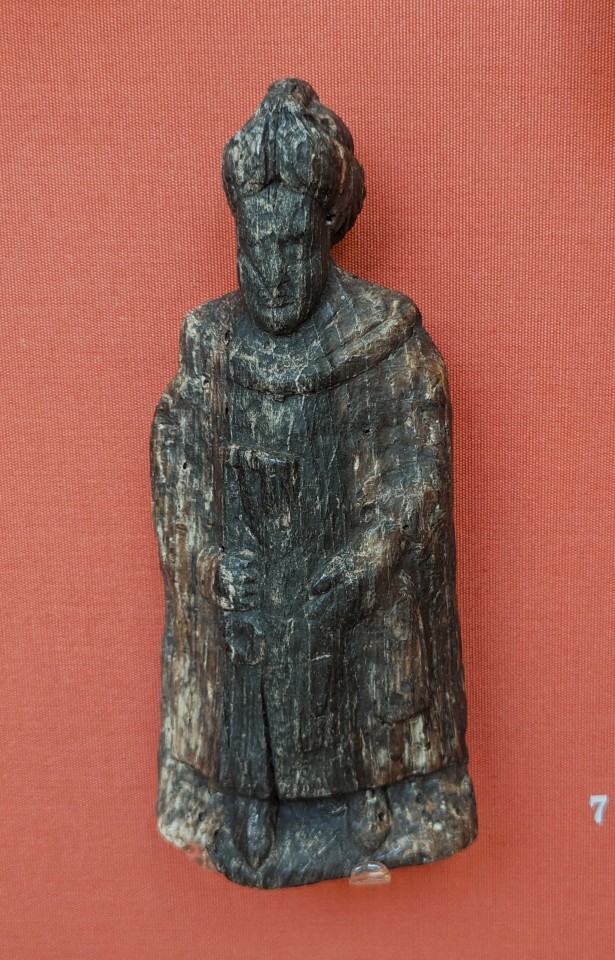
Oak Statuette of the Goddess Epona from Winchester, England dated to the 1st Century CE on display at the Winchester City Museum in Winchester, England
This small statue is thought to be the Gallo-Roman goddess Epona who was a protector of horses and goddess of fertility. While Epona's origins are from Celtic peoples the goddess proved to be very popular amongst the cavalry regiments in the Roman army. She was the sole Celtic diety worshipped in the city of Rome due to this.
Photographs taken by myself 2023
#art#archaeology#history#celts#celtic#england#english#ancient#roman empire#winchester city museum#winchester#barbucomedie
264 notes
·
View notes
Text

Two Iron Age sword hilts, from Ballyshannon, Donegal, Ireland & Yorkshire, England
458 notes
·
View notes
Text

STRETTWEG CULT WAGON (7th century BCE)
88 notes
·
View notes
Text



Petróglifo de Pedra Furada, Touro, 27-12-24
#photography#photo#photographers on tumblr#aesthetic#aesthetics#nature#galiza#stone#prehistory#archaeology#prehistoric#forest#forestcore#ancient#farmland#Touro#Petróglifo#petroglyphs#Pena Furada#celtic#castrexos#celts#solpor#sunset#sunlight#komorebi#dusk#rural
61 notes
·
View notes
Photo
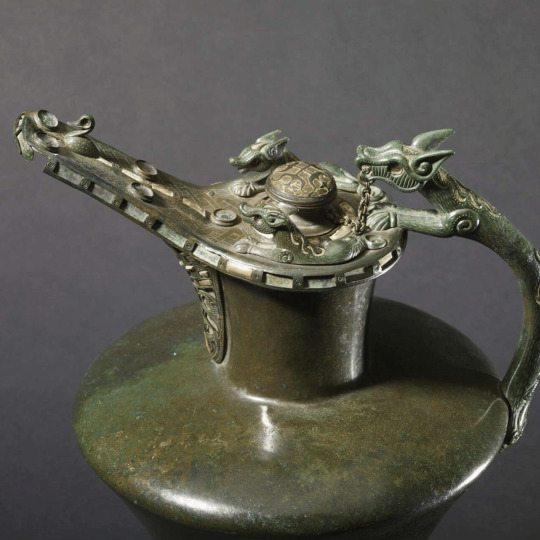
Feasts were an important part of ancient Celtic culture which marked important dates in the calendar and community successes. They were, too, an opportunity to display social status and, of course, eat and drink aplenty. Drunkenness and brawling were not an uncommon feature of these events, and sometimes there were even fights to the death over matters of honour such as who should have the right to eat the best cut of meat. Feasts feature prominently in tales from Celtic mythology and even give their name to several celebrated works in the Irish-Celtic cycle of myths.
33 notes
·
View notes
Text
Images from respectively rural Ireland, Scotland, Isle of Man, Wales, Cornwall and Brittany...

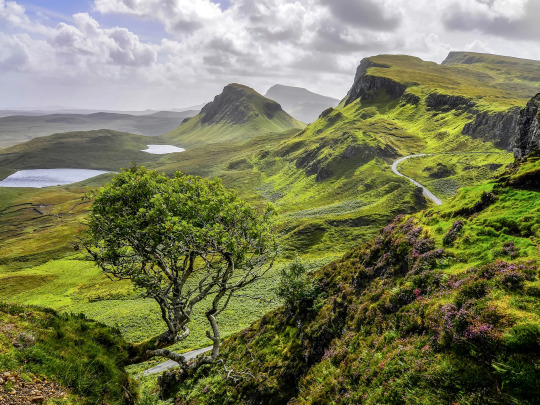



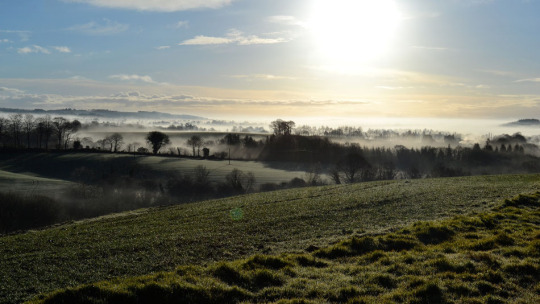
#nature#hiking#travel#naturecore#rural europe#european travel#celtic#celts#celtic nations#rural#rural aesthetic#cottagecore#ireland#scotland#isle of man#wales#cornwall#brittany#bretagne#breton#irish#scottish#manx#kernow#cymru#countryside#country life#seaside#mountainside#mountains
59 notes
·
View notes
Text
Stone Circles in France
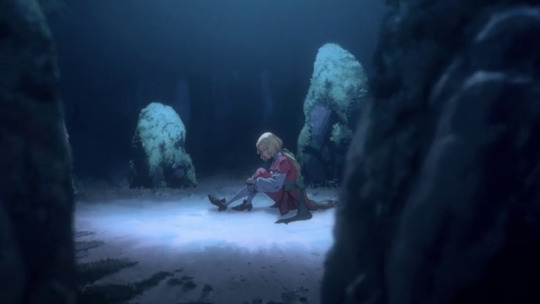
Something I have wanted to talk about more ever since the first trailer dropped about a month ago, is the stone circle near Machecoul, that seems to play somewhat a big role in Maria's life.
We first meet Richter and Maria at the stone circle, and in season 2 we learn that she learned magic there. This is why Tera takes her there to try to control her magic once more.
So, obviously you might ask: "Why are there old stones in a circle somewhere in France?"
As a European of course, I have grown up with the Asterix comics, and hence my mind just went: "Oh, yeah, they are there because of the Galls. Duh." Though then I did some google-fu and found out that it is not quite that easy.
So, let's talk about Celts and stones.
As I spoke about yesterday: We have sadly super little information about the celts and their precursors, because the colonialization within Europe (partly through the Romans, partly through other groups) has mostly just erased most what was once known of this mostly oral culture. We know a bit about the Gaels in Ireland and Scotland (mind you: We also know that the Gaels in Ireland were not exactly the same as those in Scotland), but for everyone else we know a couple of legends that survived as oral history for long enough that someone who thought it important to record it. Part of the reason in fact that the Gaels managed to hold onto more than anyone else is that they had secret Bard Colleges until into the 18th century, where they literally taught people their oral traditions, despite it being forbidden.
Back to the stone circles.
Celts definitely loved to build structures that are made up of aesthetically aranged stones. Think Stonehenge, which is probably one of those structures everyone kinda knows. But Stonehenge is by far not the only of these sides. And in fact they are scattered all over the former celtic areas.
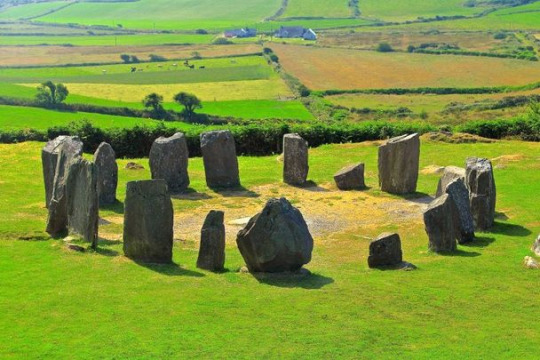

These two are both from Ireland, where we have the best preserved of those stone circles. But there are also several of them in France.
The best known stones in France are actually not in a circle formation, though. Those are the Carnac stones in Western France.
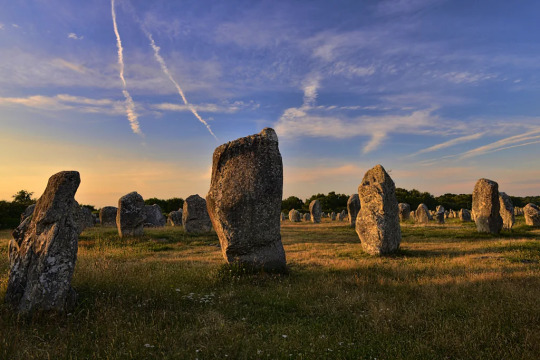
Those are located about 160km northwest of Machecoul. So a good bit, but still in the same general area. Another fairly well known stone formation - in this case once more a circle - is the Kergonan Cromlech. Which is again about 160km away from Machecoul.
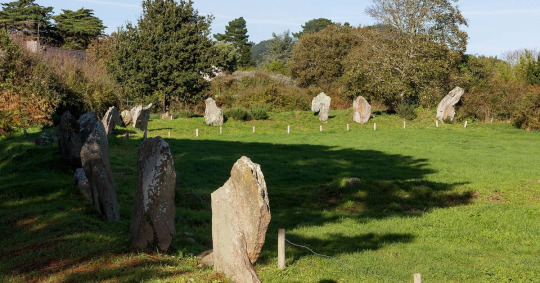
And here is the thing: We actually do not know what is actually up with those stone formations. We know that some of them were created to commemorade the grave of a king or another important burial. We also know that some of them are aligned with certain celestial events (like the solstices). So the general idea is that those stone structures, that are mainly between neolithic and mesolithic. Which is one of the biggest problems.
See, the celts existed with their own culture throughout these areas (mainy the British Islands, France, the Iberian Peninsula and at times also in the area of todays Belgium) at times until about 1000CE. However, those stone structures were build generally speaking between 4500BC and 1500BC. So even those Celts that later were around might not even have known why those structures have been build.
The general consensus between archeologists and anthropologists is, that they were ritual sites related to religious practice. But you should also know that generally speaking archeologists and anthropologists will usually just go "ritual!" whenever we find something and are not certain what it was for. (See also the many things that might have well been dildos, which makes archeologists go: "Eh, probably some ritual practice about worshipping male fertility?!")
Though to be fair: The fact that we know some of those structures are definitely used in terms of graves - and to celebrate certain celestial events - makes it quite likely that there was a ritual component to it.
This is a map of the stone structures we know to be located in France. You might note that none of them is really close to Machecoul. Though given that Machecoul is still fairly close to the Southwestern cluster, it would not to be too off to say: "Oh, yeah, actually there was one but that got destroyed before we found it."
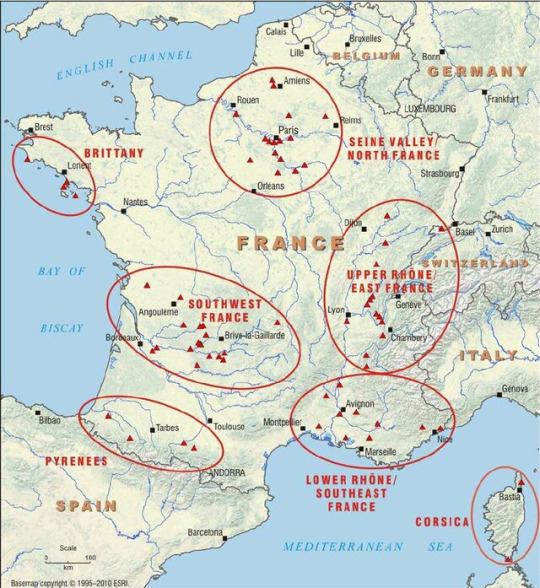
My big question is, what this means about Maria's powers - especially as I was informed that the fact that this is a stone circle of this kind was made very clear in the scripts from the very beginning on.
Especially given that it is called out twice that she might draw the creatures from the Otherworld...
#castlevania#castlevania netflix#castlevania nocturne#maria renard#french history#celtic#celts#cletic history#european history#neolithic#mesolithic
33 notes
·
View notes
Text
"Centuries ago, two people were buried arm in arm on top of a horse in what is now Austria. The unique burial prompted archaeologists to think that the two were a male-female married couple from medieval times. But it turns out they couldn't have been more wrong.
A new analysis of the remains suggests that the couple was actually a mother-daughter pair who died around 1,800 years ago during the Roman era.
"It's the first genetically proven mother-daughter burial in Austria in Roman times," study senior author Sylvia Kirchengast, a professor of evolutionary anthropology at the University of Vienna, told Live Science. "We also disprove a long-held misconception about the kind of relation between the two individuals.
In the new study the researchers re-evaluated the remains via radiocarbon dating, ancient DNA analysis and a visual inspection. They found that the bones belonged to individuals whose ages at death were 20 to 25 and 40 to 60 years old and lived around A.D. 200 when the Roman Empire held sway over the region. In a twist, both human skeletons turned out to be females, according to an anatomical analysis. DNA results confirmed their biological female status and showed they were first-degree relatives — meaning they were either sisters or mother and daughter, according to the study, which was published in the May issue of the Journal of Archaeological Science: Reports.
Due to the pair's DNA results, their age difference and other factors, the researchers concluded that individuals were mother and daughter, with the daughter embracing the mother in the grave. "It's very unlikely that two sisters have an age difference of 20 years during those times. So we felt that it's more likely that they are a mother-daughter pair," Kirchengast said.
The inclusion of a horse and gold pendants strongly hints that the women were of high social status. It also indicates they were non-Roman elites. "To our knowledge it's extremely uncommon for Roman people to be buried with horses. They were not a 'horse-people'," study lead author Dominik Hagmann, an archaeologist at University of Vienna, told Live Science. He suspected these two individuals were from a Celtic culture still existing in Roman times. The Celts were more commonly buried horses with their owners.
There are other signs that the deceased were familiar with horses. "What I find odd is that the older skeleton shows signs of frequent horse riding," Kirchengast said. "Maybe both women were enthusiastic horse-riders.""
#I promise I will soon be back with new content#in the meantime here is a story that touched me deeply#history#women in history#antiquity#ancient world#archeology#women's history#roman tag#austria#austrian history#3rd century#roman empire#celts#celtic
95 notes
·
View notes